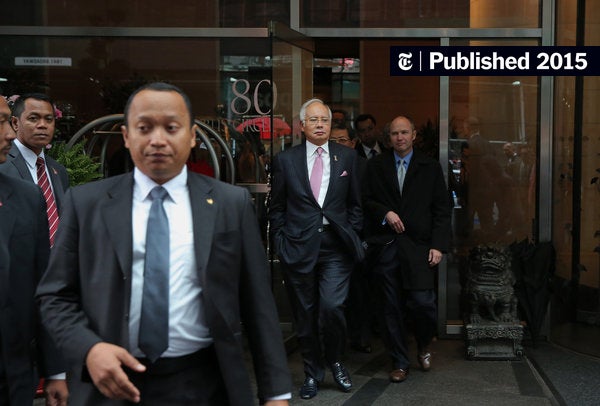The Goldbergs: Comparing The Show To Real 80s Family Dynamics

Table of Contents
Parenting Styles in The Goldbergs vs. Reality
The Authoritarian Father Figure
Murray Goldberg, the patriarch of The Goldbergs family, embodies the quintessential stern 80s father. His parenting style, while comedically exaggerated, reflects aspects common in many working-class families of the era.
- Strict discipline: Murray's firm hand and emphasis on rules are reminiscent of a more authoritarian parenting approach prevalent in the 80s.
- Emphasis on work ethic: His relentless focus on hard work and providing for his family mirrors the societal values of the time.
- Emotional repression: Murray's difficulty expressing emotions, though played for laughs, reflects a common characteristic of many fathers of that generation.
- Contrasting with modern parenting: Compared to today's more permissive parenting styles, Murray's approach seems stark, highlighting the generational shift in parenting philosophies.
The show uses Murray's gruff exterior and often-comical frustration to highlight the pressures and expectations placed on 80s fathers. Scenes where he struggles to connect with his children, despite his clear love for them, resonate with viewers who may have experienced similar dynamics in their own families. His iconic catchphrases and reactions become shorthand for a certain kind of 80s dad.
The Overbearing Yet Loving Mother
Beverly Goldberg is arguably the most memorable character, and her parenting style is both over-the-top and relatable. While exaggerated for comedic effect, her character embodies certain aspects of motherhood in the 80s.
- Overprotective nature: Beverly's constant hovering and interference in her children's lives mirrors the anxieties some 80s mothers felt about raising children in a rapidly changing world.
- Smothering love: While her intentions are always good, Beverly's intense and sometimes overwhelming love can be seen as a reflection of the emotional intensity often associated with 80s parenting.
- Typical of some 80s mothers: Not all mothers were like Beverly, but her character represents a certain archetype – the highly involved, emotionally expressive mother striving for the best for her family.
- Comedic exaggeration: The show uses Beverly’s eccentricities to amplify common anxieties and behaviors of mothers, highlighting both the joys and challenges of parenting during the 80s. Her over-the-top reactions provide comedic relief but also reveal underlying truths about parenting pressures.
Sibling Dynamics and Family Relationships in the 80s
The Goldberg Siblings' Relationships
The Goldberg siblings – Adam, Barry, and Erica – showcase the classic dynamics of sibling rivalry and competition for parental attention, experiences familiar across generations.
- Sibling rivalry: Their constant bickering, teasing, and attempts to one-up each other are entirely relatable, reflecting the common tensions found in many families.
- Competition for attention: Each sibling's unique personality and quest for parental approval creates conflict and comedic moments, which accurately portrays the dynamics of many 80s families.
- Evolving relationships: As the show progresses, the siblings' relationships mature and evolve, showing the complex bonds that develop over time. Their interactions offer a realistic depiction of sibling relationships.
- Relatable sibling dynamics across generations: The core issues of sibling rivalry and the search for individual identity remain timeless, making the Goldberg siblings' struggles easily relatable to modern audiences.
Extended Family and Community Influence
The Goldbergs effectively depicts the strong sense of community and extended family influence prevalent in the 80s.
- Stronger community ties: The show portrays a close-knit neighborhood where neighbors interact frequently, providing a sense of support and shared experience.
- Reliance on extended family support: The involvement of grandparents and other relatives in the children's lives highlights the importance of extended family support systems during the 80s.
- Influence on children's upbringing: The community and extended family’s collective influence on the children's values and behavior reflects a common aspect of 80s family structures.
- Impact of social structures on family dynamics: The show subtly demonstrates how community and social structures impacted family life during the era.
Technological Influences and Cultural Shifts in The Goldbergs
The Impact of Emerging Technologies
The Goldbergs masterfully incorporates the technological advancements of the 80s, showcasing how these changes impacted family dynamics.
- The rise of video games: The show features iconic games like Pac-Man and the emergence of Nintendo, highlighting the cultural impact of video games on family life and leisure activities.
- Home computers' impact on family life: The introduction of home computers and their influence on entertainment, education, and family interactions is accurately portrayed.
- The influence of 80s music and fashion: The show's soundtrack and characters' attire capture the distinctive style and pop culture trends of the 80s.
- Shaping family interactions and entertainment: The show successfully illustrates how these technologies shaped family interactions, leisure time, and communication styles.
Reflecting Societal Changes of the 80s
The Goldbergs doesn't shy away from depicting the broader societal shifts of the 1980s.
- Economic changes: The show subtly addresses the economic realities of the time, particularly impacting the Goldberg family.
- Social trends: The show reflects the evolving social norms and attitudes of the 80s, including family structures and values.
- Evolving family structures: While largely focusing on a traditional nuclear family, the show also hints at evolving family structures becoming more prevalent.
- Cultural touchstones: The Goldbergs effectively uses cultural references and events to ground its narrative in the reality of the 80s.
Conclusion
The Goldbergs, while employing comedic exaggeration, offers a compelling and often accurate glimpse into the complexities of 80s family life. The show successfully captures the essence of 80s parenting styles, sibling dynamics, and the influence of emerging technologies and societal changes. While not a perfect representation of every 80s family, its portrayal of The Goldbergs 80s family provides a valuable and entertaining lens through which to examine this fascinating era. While some aspects are heightened for comedic effect, the core family relationships and societal influences feel authentic.
Further explore the nuances of 80s family life by watching The Goldbergs and reflecting on your own family experiences, and then share your thoughts on the show's portrayal of The Goldbergs 80s family in the comments below!

Featured Posts
-
 Najib Razak Faces New Allegations Involvement In 2002 French Submarine Bribery Scheme
May 22, 2025
Najib Razak Faces New Allegations Involvement In 2002 French Submarine Bribery Scheme
May 22, 2025 -
 Rot In Hell Landladys Explosive Reaction To Employee Resignation
May 22, 2025
Rot In Hell Landladys Explosive Reaction To Employee Resignation
May 22, 2025 -
 Lady And The Tramp Cubs Fans Hilarious Hot Dog Kiss
May 22, 2025
Lady And The Tramp Cubs Fans Hilarious Hot Dog Kiss
May 22, 2025 -
 Klopp Un Gelecegi En Guencel Transfer Soeylentileri Ve Analiz
May 22, 2025
Klopp Un Gelecegi En Guencel Transfer Soeylentileri Ve Analiz
May 22, 2025 -
 The China Problem A Deep Dive Into The Challenges Facing Premium Automakers
May 22, 2025
The China Problem A Deep Dive Into The Challenges Facing Premium Automakers
May 22, 2025
